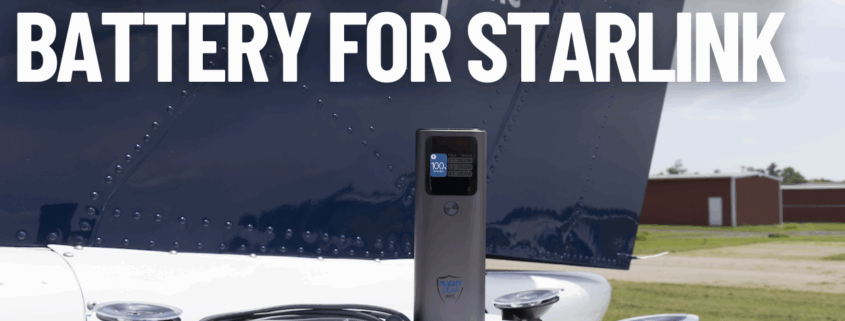The perfect portable battery for Starlink: Flight Gear Smart Battery Pack Max
|
Getting your Trinity Audio player ready...
|
More and more general aviation pilots are flying with Starlink Mini, the first truly portable and affordable satellite connectivity system that works in small airplanes. Passengers can browse social media and pilots can access additional weather products at any altitude, and all with simply a square antenna mounted in the window and a $65/month subscription. We are both excited and nervous about the Starlink revolution, but it’s undeniably a powerful tool when used properly.
The catch? Keeping Starlink Mini powered isn’t easy in most piston airplanes.
Enter the new Flight Gear Smart Battery Pack Max. It’s perfect for all your electronic devices, from iPad and iPhone to ADS-B receiver and GoPro, but it’s also the first portable aviation battery pack that reliably works with Starlink Mini. We’ve been flying with it for the last two months and can tell you it’s our new go-to charging accessory. Here’s why.
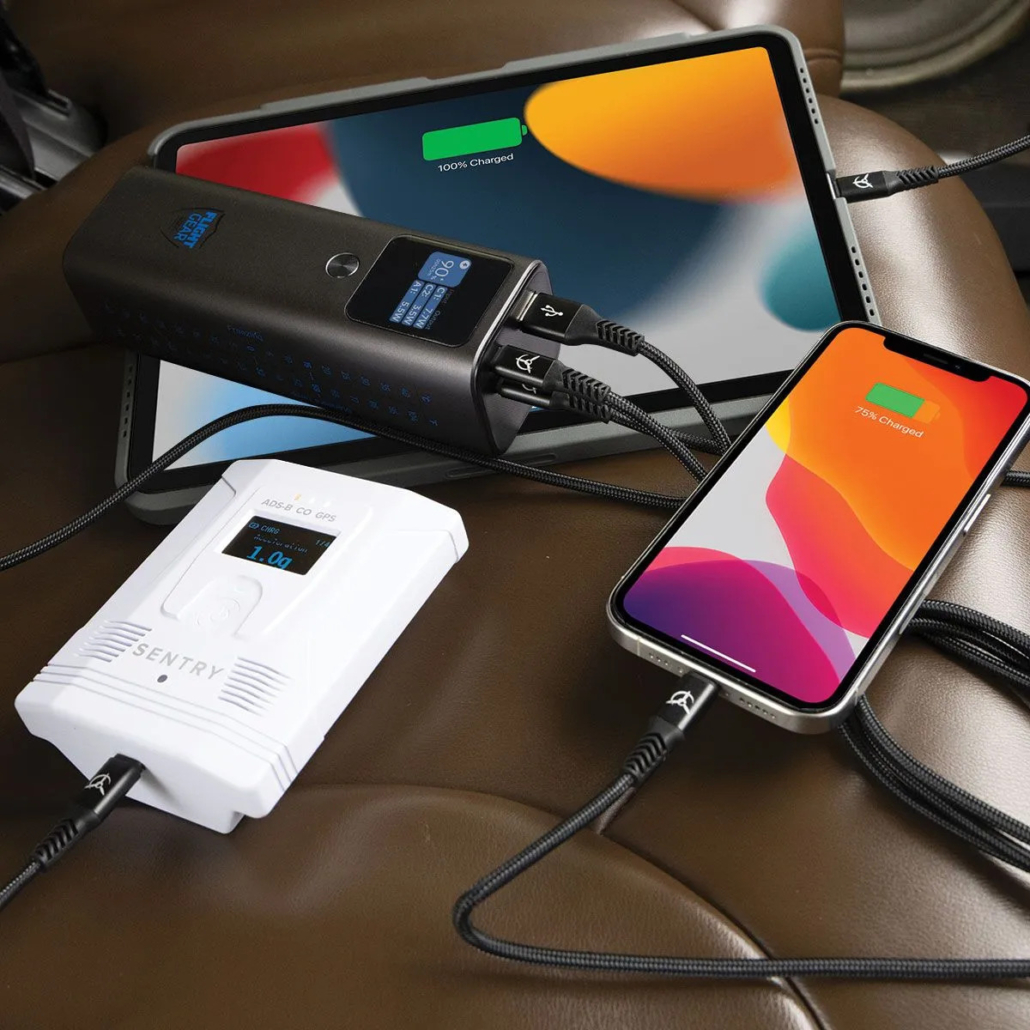
- Plenty of power
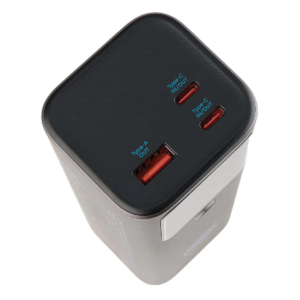
The Smart Battery Pack Max offers fast charging over its USB-C port.
Starlink Mini’s specification sheet says USB power sources (in other words, not a wall power plug) must put out 100 watts to be compatible. The typical power consumption is only 25-40W, a figure we would agree with based on our hundreds of hours of flight testing, but if the antenna doesn’t see 100 watts initially, it may not power on. As many pilots have learned the hard way, that’s more than most airplane cigarette lighters can put out, so traditional USB charging plugs are out. But 100 watts is also more than older generation battery packs can offer, as most of them top out in the 50-70 watt range.
The Flight Gear Smart Battery Pack Max, on the other hand, offers fast charging over its USB-C port, including Power Delivery. The total output is 140 watts, plenty for keeping your Starlink Mini running consistently, and a surprisingly high watt output for such a compact battery. Just be sure to get a Starlink-to-USB-C power cable, since the cable that’s included with Starlink Mini will not plug into a battery pack.
- Meets FAA requirements
High power is great, but you can actually have too much power—especially in a small airplane, where lithium battery fires can be dangerous. To limit the risk from an in-flight thermal runaway, the FAA and TSA only allow airline passengers to bring lithium batteries up to 100 watt hours (Wh), and only in a carry-on bag.
While that limitation does not technically apply to GA pilots, it’s a great guideline to follow. If it’s good enough for Delta and United, it’s good enough for Cessna and Piper. We’ve seen some pilots powering their Starlink with huge 1000Wh battery packs, and while they provide tons of power, they are a significant safety concern. In the case of a thermal runaway, a battery that large can become a low tech bomb. That’s why this new battery is such a great choice: it has enough power to run Starlink Mini or charge your iPad, but while staying under the 100Wh limit.
- Safety features built in
The good news? A thermal runaway is nearly impossible with the Flight Gear Smart Battery Pack Max. It has numerous features to protect itself that are always working in the background, including: overtemperature, overvoltage, overcharging, overcurrent, and short circuit protection. If it senses the battery is getting too hot, it will shut down to prevent damage or runaway. You can even monitor the temperature of the battery on the color screen.
- Portable size
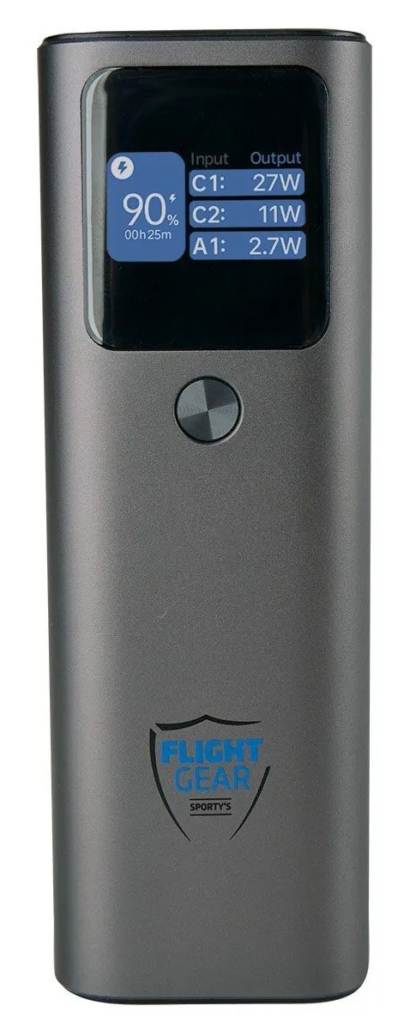
This pack is surprisingly compact for its capacity.
The physical size is also convenient. At 6.1″h x 2.1″w x 1.9″d, this pack is surprisingly compact for its capacity. It will fit in the side pocket in a Cessna, the center console in a Cirrus, or in a seatback pocket in a Cherokee. Weight less than 1.5 lbs., the Flight Gear Smart Battery Pack Max also won’t put your flight bag over gross.
That small size means you can keep the battery pack in your regular scan, making it easy to monitor the screen or unplug Starlink if you need to reset it (there is no power button). In the unlikely scenario of a thermal runaway, you could also put the battery in a fire bag to contain the damage.
- Full color screen
Beyond the “sweet spot specs” on this battery, our favorite feature is the color screen. This isn’t just a basic LED indicator—pilots can see run time remaining, watt output for each port (and total), temperature, and time to fully recharge when it’s plugged in. This is a huge upgrade over older battery packs, whose flashing lights always left us wondering how much time do I really have left? This is particularly important with Starlink Mini, because if your passengers are anything like ours, once they taste full internet in flight they are loath to give it up. This product makes it easy to keep track of your Starlink time remaining.
- Long battery life
With a substantial 27,600 mAh capacity, the Flight Gear Smart Battery Pack Max dwarfs most portable chargers on the market. To put that into perspective, consider the charge capacity for common cockpit devices (note that these times assume only one device is charging at a time):
-
- Starlink: The power draw for a Starlink Mini varies based on the number of connections and the mounting location, but in our testing this battery pack can power it for 2-3 hours on a full charge.
- Tablet: Expect around 4 charges for your iPad. That’s ample power for even the longest cross-country flights.
- Phone: Recharge your phone nearly 8 times.
- ADS-B receivers: Your Sentry or Stratus can be recharged more than 6 times.
There are three total charging ports, two USB-C for high speed charging and one USB-A for charging older devices, so the battery can keep almost any electronic device topped off. And while 2-3 hours of Starlink time may not cover every flight, the easy solution is to buy two battery packs. You can use one to run Starlink Mini while the other one is recharging.
Speaking of recharging, the Flight Gear Smart Battery Pack Max also charges quickly: using a wall plug, the battery pack can be recharged to 50% in half an hour. It also features pass-through charging, a truly indispensable feature that allows the battery pack to be recharged while it simultaneously powers your devices. This means if you have an available power source in the aircraft, you can keep your Starlink Mini running and top off the battery pack (via the USB-C in plug) at the same time.
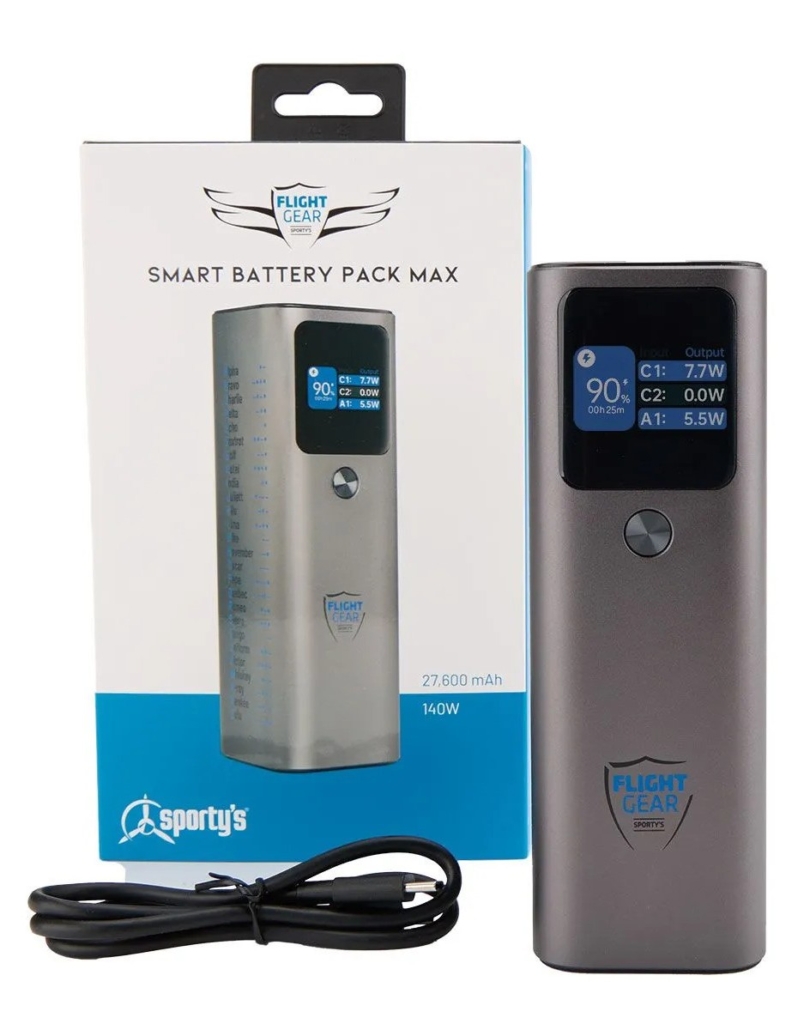 The verdict: essential gear for the connected cockpit
The verdict: essential gear for the connected cockpit
For general aviation pilots embracing the Starlink Mini revolution, the Flight Gear Smart Battery Pack Max isn’t just a useful gadget—it’s an essential piece of equipment. It solves the critical power challenge posed by Starlink Mini, ensuring consistent, high-speed connectivity throughout your flight. Its robust capacity, intelligent features, and thoughtful design also make it an excellent general-purpose power solution for all your other cockpit electronics. If you’re a tech-savvy pilot, the Flight Gear Smart Battery Pack Max deserves a prime spot in your flight bag. It’s a true game-changer for the modern cockpit.
For the complete Starlink Mini kit, this new option from Sporty’s is a great choice. It includes an adjustable suction cup mount for Starlink Mini, a 10 ft. power cable (with USB-C), and a Flight Gear Smart Battery Pack Max.
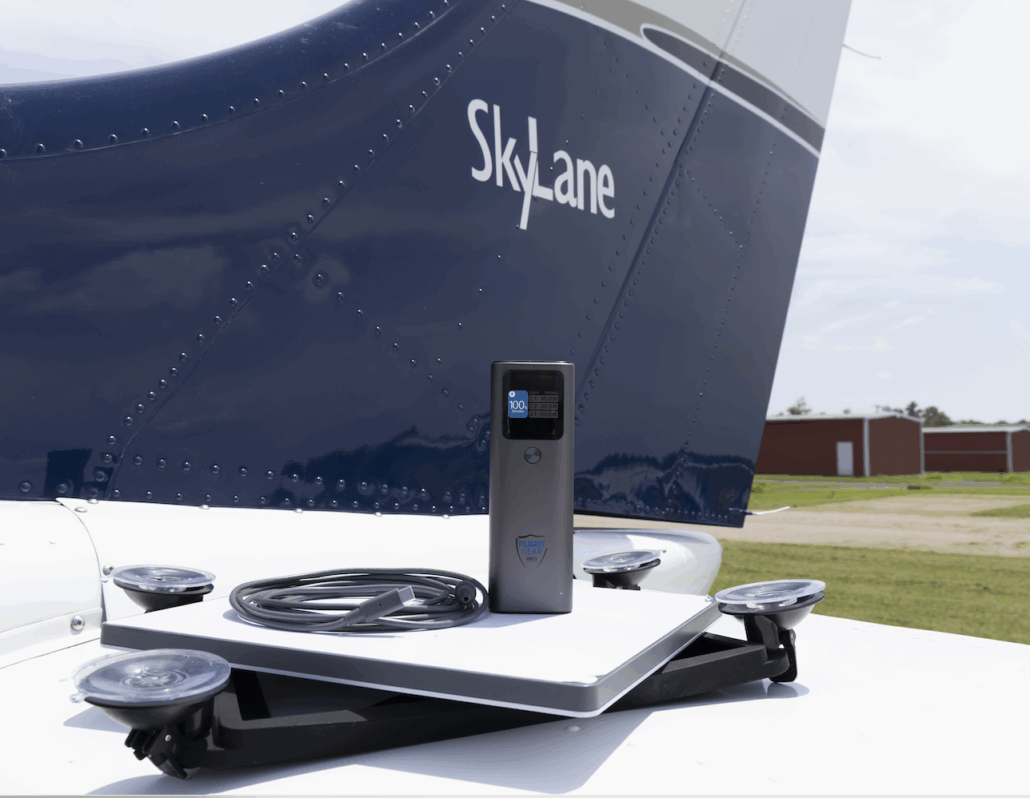
The Starlink Mini Kit includes an adjustable suction cup mount for Starlink Mini, a 10 ft. power cable (with USB-C), and a Flight Gear Smart Battery Pack Max.
Sidebar: watts, watt hours, and milliamp hours
When diving into the world of portable power, especially for devices like the Flight Gear Smart Battery Pack Max, you’ll frequently encounter terms like watts (W), watt-hours (Wh), and milliamp-hours (mAh). Understanding the difference is key to truly appreciating a battery’s capabilities.
Watts (W): The Rate of Power Delivery.
Watts measure power, which is the rate at which energy is being used or delivered at any given moment. Think of it as how fast fuel is being consumed. A device that requires 25 watts of continuous power will consume 25 joules of energy every second. When you see a specification like “140W fast charging” or “140 watts output” for the Flight Gear Smart Battery Pack Max, it means the battery can deliver power at a very high rate, crucial for demanding devices like Starlink Mini.
Watt-hours (Wh): Total Energy Stored.
Watt-hours represent the total energy stored in a battery. This is a more comprehensive measure than mAh because it takes into account both the battery’s capacity (mAh) and its voltage (V). The formula is: Wh = (mAh × V) / 1000. For instance, a 27,600 mAh battery operating at, say, 3.5V (a common internal voltage for many power banks) would be approximately 97 Wh. Watt-hours are particularly important for air travel regulations, but they also give you a clearer picture of how long a battery can power a device, regardless of that device’s specific voltage requirements.
Milliamp-hours (mAh): The Capacity of Current over Time.
mAh is typically used to describe the capacity of a battery. It tells you how much electrical charge a battery can hold. Think of it as the size of the fuel tank. A higher mAh rating means the battery can deliver a certain amount of current (measured in milliamps) for a longer period. For example, a 10,000 mAh battery can theoretically deliver 10,000 milliamps (or 10 amps) for one hour, or 1,000 milliamps for 10 hours. It’s useful for comparing batteries of the same voltage (e.g., comparing two smartphone batteries), but it doesn’t tell you the total energy without knowing the voltage.
In essence: W is how quickly it can deliver energy, Wh is the total energy it stores, and mAh is how much current it holds. For pilots relying on critical electronics, understanding all three helps in selecting the right power solution.
- Do I really need to use Airplane Mode on my iPad or iPhone Pilot? - December 31, 2025
- Flying with the Garmin D2 Mach 2 and D2 Air X15 - October 28, 2025
- Weather planning with Garmin Pilot: widgets and flight profile - October 22, 2025

